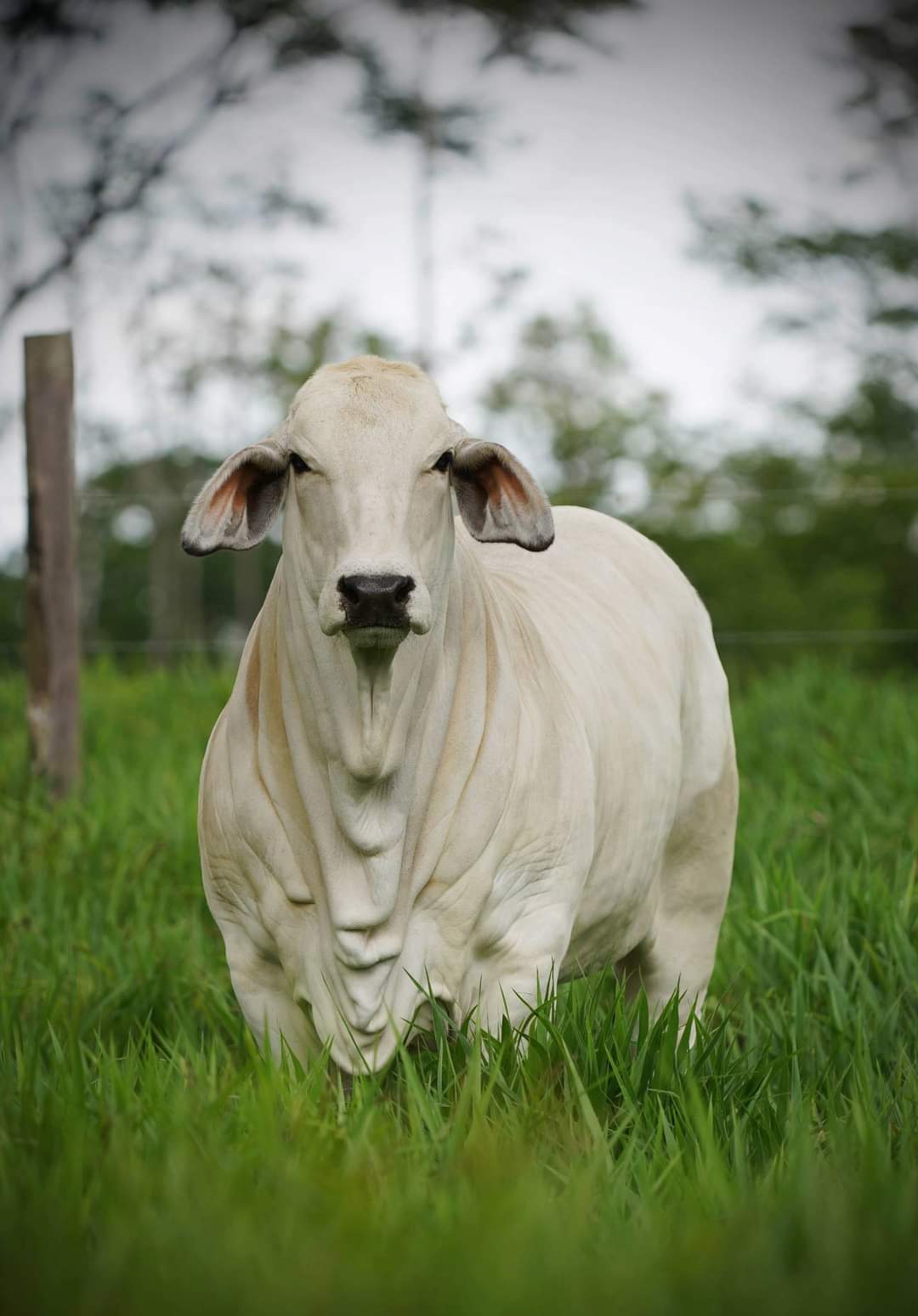Caracterización de la población bovina cebú con certificado de registro genealógico en Costa Rica
DOI:
https://doi.org/10.15517/am.v31i3.39059Palabras clave:
Bos indicus, pedigrí, sementales, raza puraResumen
Introducción. Existe escasa información sobre ganado puro con certificado genealógico en Costa Rica. Es necesario conocer el estado de esta población para dirigir esfuerzos en la mejora productiva del ganado cebú. Objetivo. Actualizar la base de datos de la Asociación de Criadores de Ganado Cebú de Costa Rica (ASOCEBÚ), caracterizar dicha población y analizar el uso de los machos de la raza Brahman gris en el país. Materiales y métodos. Se realizó un inventario en 121 ganaderías para actualizar la base de datos de la Asociación al año 2018. La información se clasificó por raza, sexo, edad, total de animales, criadores, región socio-económica, provincia y cantón. Se determinó la frecuencia de uso de reproductores Brahman gris. Resultados. Se contabilizaron 10 995 animales puros, distribuidos en seis razas (Brahman gris, Brahman rojo, Nelore, Gyr, Guzerat e Indubrasil). La raza Brahman gris predominó con un 74,5 % de la población y 76,8 % del total de criadores. La región Chorotega presentó la mayor población inscrita (49,5 %) y el mayor número de criadores (37,2 %). El 55,8 % de la población total provino de diez criadores, sin embargo, el mayor número de ganaderías correspondió a fincas con pocos animales. En la raza Brahman gris, el 60,8 % de la población provino de toros nacionales y el 39,2 % del extranjero. Conclusión. Los cebuinos puros registrados se distribuyen en todo el país. Se debe poner atención al manejo genético para minimizar la consanguidad. Se recomienda a los encargados de censos y encuestas, incluir la población de razas puras dentro de las evaluaciones.
Descargas
Citas
ABBA (American Brahman Breeders Association). 2017. Most influential gray herd sires in the last five years. The Brahman Journal, TX, USA. https://brahmanjournal.com/cattle/most-influential-gray-herd-sires-in-the-last-five-years (accessed Sep.25, 2017).
ASOCEBÚ (Asociación de Criadores de Ganado Cebú de Costa Rica). 2017. Raza Brahman. ASOCEBÚ, CRI. http://asocebucr.com/razas/#raza-brahman (consultado 16 set. 2017).
ASOCEBÚ (Asociación de Criadores de Ganado Cebú de Costa Rica). 2020. Creación del registro genealógico. ASOCEBÚ, CRI. http://asocebucr.com/cebu-en-cr/#creaci%C3%B3n-del-registro-geneal%C3%B3gico (consultado 25 mar. 2020).
Campos, J.A. 2017. Uso de marcadores genéticos para análisis de diversidad genética y pruebas de verificación de identidad y paternidad en bovinos Brahman registrados en Costa Rica. Tesis MSc., Universidad Nacional, CRI.
Campos, J., B. Vargas, J. Camacho, y A. Cruz. 2018. Pruebas de identidad y paternidad en ganado Brahman registrado de Costa Rica. Agron. Costarricense 42(1):49-62. doi:10.15517/rac.v42i1.32197
Cervini, M., F. Henrique-Silva, N. Mortari, y E. Matheucci. 2006. Genetic variability of 10 microsatellite markers in the characterization of Brazilian Nellore cattle (Bosindicus). Genet. Mol. Biol. 29:486-490. doi:10.1590/S1415-47572006000300015
CORFOGA (Corporación de Fomento Ganadero). 2000. Análisis del censo ganadero 2000. Ministerio de Agricultura y Ganadería, CRI. http://www.mag.go.cr/biblioteca_virtual_animal/censo-ganadero-2000.pdf (consultado 16 set. 2017).
CORFOGA (Corporación de Fomento Ganadero). 2020. Programa nacional de evaluación y mejoramiento genético. San José, CRI. https://www.corfoga.org/mejoramiento-genetico/ (consultado 17 mar. 2020).
Gómez, Y.M., M. Fernández, D. Rivera, G. Gómez, and J.E. Bernal. 2013. Genetic characterization of Colombian Brahman cattle using microsatellites markers. Russ. J. Genet. 49:737-745. doi:10.1134/S1022795413070041
INEC (Instituto Nacional de Estadística y Censo). 2015. VI Censo nacional agropecuario. INEC, San José, CRI.
Loftus, R.T., D.E. MacHugh, D.G. Bradley, P.M. Sharp, and P. Cunningham. 1994. Evidence for two independent domestications of cattle. Proc. Natl. Acad. Sci. 91:2757-2761. doi:10.1073/pnas.91.7.2757
Madrigal, J., y M. Fallas. 2013. Informe encuesta ganadera 2012. CORFOGA, San José, CRI.
Martínez, M., B. Vargas, J.M. Cordero, I. Chacón, y B. León. 2015. Diversidad Genética entre subpoblaciones raciales bovinas de Costa Rica. Agron. Costarricense 39(2):33-45.
Novoa, M.A., y W. Usaquén. 2006. Diversidad genética de la población colombiana de ganado Cebú Brahman Americano Bos indicus (Bovidae). Acta Biol. Colomb. 11:112.
Quirós, E. 2006. Historia de la Ganadería Bovina en Costa Rica. CORFOGA, San José, CRI.
Presidente de la República, y MAG (Ministerio de Agricultura y Ganadería). 1989. Decreto Rjrcutivo No19400-MAG: Traspasa registro genealógico de ganado a Asociación de Productores y Criadores de Ganado Procuraduría General de la República, CRI. http://www.pgrweb.go.cr/scij/Busqueda/Normativa/Normas/nrm_texto_completo.aspx?param1=NRTC&nValor1=1&nValor2=4133&nValor3=4378&strTipM=TC (consultado 15 mar. 2020).
Rueda, J. 2015. Historia y líneas de sangre de la raza Brahman. Memoria del Seminario técnicas de selección y juzgamiento (San José, Costa Rica). ASOCEBÚ. San José, CRI.
Takeshima, S., C. Corbi-Botto, G. Giovambattista, and Y. Aida. 2018. Genetic diversity of BoLA-DRB3 in South American Zebu cattle populations. BMC Genetics 19:33. doi:10.1186/s12863-018-0618-7
Vélez, G. 2016. ¿Por qué utilizar ganado Cebú en el trópico? Tipo impreso Ltda., Bogotá, COL.

Archivos adicionales
Publicado
Cómo citar
Número
Sección
Licencia
1. Política propuesta para revistas de acceso abierto
Los autores/as que publiquen en esta revista aceptan las siguientes condiciones:
- Los autores/as conservan los derechos morales de autor y ceden a la revista el derecho de la primera publicación, con el trabajo registrado con la licencia de atribución, no comercial y sin obra derivada de Creative Commons, que permite a terceros utilizar lo publicado siempre que mencionen la autoría del trabajo y a la primera publicación en esta revista, no se puede hacer uso de la obra con propósitos comerciales y no se puede utilizar las publicaciones para remezclar, transformar o crear otra obra.
- Los autores/as pueden realizar otros acuerdos contractuales independientes y adicionales para la distribución no exclusiva de la versión del artículo publicado en esta revista (p. ej., incluirlo en un repositorio institucional o publicarlo en un libro) siempre que indiquen claramente que el trabajo se publicó por primera vez en esta revista.
- Se permite y recomienda a los autores/as a publicar su trabajo en Internet (por ejemplo en páginas institucionales o personales) antes y durante el proceso de revisión y publicación, ya que puede conducir a intercambios productivos y a una mayor y más rápida difusión del trabajo publicado (vea The Effect of Open Access).























